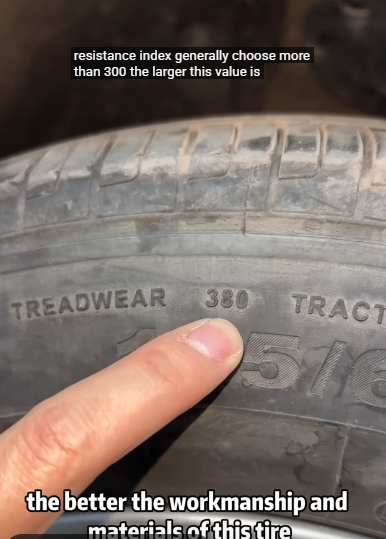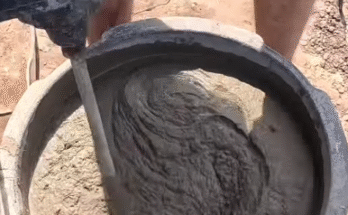
Car tires are more than just round rubber that keeps your vehicle rolling. They’re a crucial part of your car’s performance, safety, and fuel efficiency. Yet, many drivers don’t realize how much is going on beneath the surface—literally. From complex rubber compounds to hidden wear indicators, there’s a lot to know. So, what are the secrets of car tires? Let’s take a deep dive into what your tires are really telling you—and what you need to do to keep them in top shape.
1. The Real Purpose of Tread Patterns
Most people think tread patterns are only for grip, and while that’s true, there’s more to it. The grooves in your tire are specially designed to channel water away from the tire’s contact patch with the road. This prevents hydroplaning—a dangerous condition where your tires lose contact with the road due to water buildup.
Different tread designs also serve different functions. For example, all-season tires have moderate grooves to perform well in various weather conditions, while winter tires have deeper, more aggressive patterns to grip snow and ice. Performance tires, on the other hand, have fewer grooves for more surface contact, improving grip on dry roads.

2. The Meaning Behind Tire Numbers
Have you ever looked at the side of your tire and seen something like 205/55R16 91V? It might look confusing, but it’s a code packed with useful information:
- 205 – This is the width of the tire in millimeters.
- 55 – The aspect ratio, or the height of the sidewall as a percentage of the width.
- R16 – The tire’s construction (Radial) and the diameter of the wheel it fits in inches.
- 91 – The load index, or how much weight the tire can safely carry.
- V – The speed rating, indicating the maximum speed the tire can handle safely.
Understanding these numbers can help you choose the right tire for your car and driving style.
3. Rubber Compounds: More Than Just Black Rubber
The rubber used in tires isn’t just plain rubber. It’s a carefully engineered blend of natural and synthetic rubber, carbon black, silica, and other additives that improve performance.
- Summer tires use compounds that stay flexible in warm conditions but harden in the cold.
- Winter tires contain more silica, allowing them to remain soft in low temperatures for better grip.
- All-season tires strike a balance between both.
These secret formulas determine how a tire handles, wears, and reacts to different weather conditions.
4. Tires Can “Talk” Through Wear Patterns
Tires wear out naturally, but how they wear can tell you a lot about your car. For example:
- Center wear suggests over-inflation.
- Edge wear may mean under-inflation.
- Cupping or scalloping can indicate problems with suspension or balance.
- Feathering often results from poor alignment.
Regularly inspecting your tires can help you catch mechanical problems early.

5. Tire Pressure Isn’t Just About Comfort
Maintaining the correct tire pressure is vital for safety, fuel economy, and tire longevity. Under-inflated tires increase rolling resistance, which means your engine works harder and burns more fuel. Over-inflated tires, meanwhile, can cause uneven wear and reduce your car’s ability to grip the road.
The correct tire pressure for your car is listed in the owner’s manual or on a sticker inside the driver’s door. Don’t rely on the number listed on the tire sidewall—that’s the maximum pressure, not the recommended pressure.
6. The Secret of the Tread Wear Indicator Bars
Hidden within the grooves of your tires are small raised bars known as tread wear indicators. These are designed to show you when your tire tread has worn down to the legal limit (usually 2/32 of an inch in many countries).
If these bars are flush with the tread, it’s time to replace your tires. Driving on bald tires is dangerous—they lose traction easily, especially in wet conditions, and increase your braking distance significantly.
7. Not All Tires Are Created Equal
There are dozens of tire brands on the market, but not all offer the same quality or performance. Some cheaper tires may seem like a good deal, but they might use lower-quality materials, wear out faster, or perform poorly in extreme conditions.
Premium brands often invest more in research and development, resulting in better traction, quieter rides, and longer lifespans. However, the right tire also depends on your driving habits. City drivers, for instance, might not need high-performance tires, while off-roaders or those in snowy areas will require more specialized options.

8. Tires Have a Birth Date
Here’s a little-known fact: tires have a manufacturing date, and it matters. On the sidewall, look for the DOT code. The last four digits show the week and year the tire was made. For example, 2819 means the tire was made in the 28th week of 2019.
Even if unused, tires degrade over time. Rubber hardens, and cracks may develop, reducing safety. Most experts recommend replacing tires every 6 to 10 years, regardless of tread wear, especially in hot climates.
9. Rotating Tires Really Works
Rotating your tires isn’t just a suggestion—it’s one of the best ways to extend their lifespan. Front tires wear faster than rear tires due to steering and braking forces. By rotating them every 5,000 to 8,000 miles (or as recommended), you ensure even wear, which improves performance and saves you money in the long run.
Don’t forget to also align your wheels and balance your tires during service. These steps keep your ride smooth and prevent premature tire damage.
10. Seasonal Tires Make a Big Difference
Many drivers stick to one set of tires year-round, but if you live in an area with extreme seasonal changes, switching between summer and winter tires can drastically improve safety.
Winter tires have deeper tread and stay soft in freezing temperatures, giving you much better control on snow and ice. Summer tires, on the other hand, perform best in hot, dry conditions. All-season tires try to do both, but they’re a compromise—not a perfect fit for either extreme.

Final Thoughts
Tires may seem simple, but they play a massive role in your car’s safety, fuel efficiency, and handling. From the hidden meanings in their sidewalls to the compounds used in their construction, there are many secrets tucked away in that black rubber.
Being tire-smart means understanding what your tires need—and what they’re telling you. With regular inspections, proper maintenance, and the right tire choice, you can ensure a smoother, safer, and more efficient drive.
So, the next time you look at your car’s tires, remember—they’re not just round and black. They’re complex, engineered systems designed to keep you safe on the road. And now you know their secrets.



